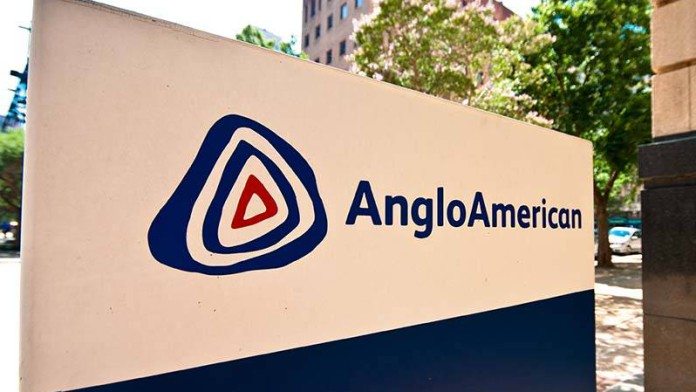
IT’S long been acknowledged that trading in gold shares is a job for the professionals. For the rest, there’s the diversified mining firms, or ‘houses’ as they used to be called, which are less prone to market volatility owing to the diversity of their metals and geographies. And, until recently, their balance sheet strength.
These firms – such as Glencore, Anglo American and BHP Billiton – were badly hit by the climb-down in metal prices from about 2011 until early 2016. Without exception, they were found to be over-indebted while their return on investment trended well below that of other asset classes.
The two-year self-help or remediation that followed has changed that. In order of market capitalisation, Glencore, BHP Billiton, Anglo American, and a fourth, the relatively newly created South32, all exist in the realm of Johannesburg’s Top 40 Index. (There are two other mining companies in the Top 40 – the Anglo subsidiaries and pure play options Anglo American Platinum and Kumba Iron Ore). Anglo American has resumed dividend payments after a two-year break, and BHP is delivering an effective payout of 65% to 70%.
Since the mining market has regained some of its former poise, a process underway for most of the year, analysts now feel bold enough to recommend investors take a fresh look at the diversifieds which they think haven’t responded sufficiently enough to metal price and self-help improvements.
Whilst they have fixed up their balance sheets and have firmly established a commitment to yield, they are yet to respond to the growing likelihood that there aren’t not enough new projects to fill growing metal demand in the medium- to long-term. The question being asked is which of the large mining houses has an in-built growth strategy without recourse to merger and acquisition activity?
The answer is Glencore and BHP Billiton, according to some of the major banks and brokerages.
The 2004-12 mining ‘super-cycle’ was driven by the mismatch in timing between Chinese demand gorwth and global supply growth, observed UK bank, and commodity trader, Goldman Sachs, in a recent report. “We contend that we are again in a period of mismatch between demand growth and supply growth which could facilitate a period of stronger-than-normal commodity prices,” it said. On this occasion, however, supply rationalisation in China and by major Western mining companies would fuel that growth rather than the double-digit demand growth which drove the super-cycle.
According to the bank, exploration spend as a proportion of metals market revenue is at its lowest level since 1990. From an absolute spend, 2016 expenditure was about $8bn which is back down to 2005 levels. “Exploration success is the genesis of the mining industry – assets can’t be mined until they are found – and thus the underspend on new project discovery may be sowing the seeds for future production challenges,” said Goldman Sachs.
Commenting during the firm’s annual general meeting in Melbourne, Andrew Mackenzie, CEO of BHP, articulated the new-found confidence of most major mining companies. “Population growth and the rise in living standards will drive demand higher for energy, metals and minerals for decades to come,” he said. “New demand centres will emerge where the key levers of industrialisation and urbanisation are still immature, such as India.”
Macquarie thinks there’s enough new production capacity for the next three years with copper equivalent compound area growth rate of about 2.3%. After this date – about 2021 – metal volumes are expected to decline as capital expenditures remain well below depreciation charges. “In the case of Anglo and South32, the upside [to respond to this] is limited … For BHP, Rio [Tinto] and Glencore the upside is more significant and we reiterate our ‘buys’,” it said.
“In our view, BHP has the highest upside potential in driving returns combined with a well-stocked pipeline of project options to choose from when the sector returns to focusing on growth,” said Macquarie. “Alongside Glencore which continues to have the highest near-term growth, we elevate BHP as out top pick in the sector,” it said.
Despite the confidence expressed at the AGM, BHP’s Mackenzie is still not entirely finished rationalising the group’s porftolio after it decided this year to dispense with its North American shale assets. As for Anglo, it’s hard to say whether its structure is exactly right, especially its exposure to the bulk minerals in South Africa. And Rio Tinto was as recently as September selling out of some of its coal assets in Australia.
Glencore, however, is moving in the opposite direction. “While Glencore resumed dividends this year, it appears to be the most growth focused of the diverisfied majors with an informal ‘business combination’ approach to Bunge (a soft commodities trading company) and over $4bn of potential transactions announced (a list that includes the purchase of a stake in Chinese coal company, Yancoal, Volcan and Chevron SA),” said Investec Asset Management.
Glencore’s latest move is mooted to be the creation of a new base metals royalty company following a $700m deal with the Ontario Teachers’ Pension Plan in which Glencore will bring royalty agreements for about ten mines in return for $350m in capital from the pension fund to buy new royalty streams. For a firm dealing in teacher pensions, this is a significant vow of faith in commodities and Glencore’s ability to take advantage of the market.











